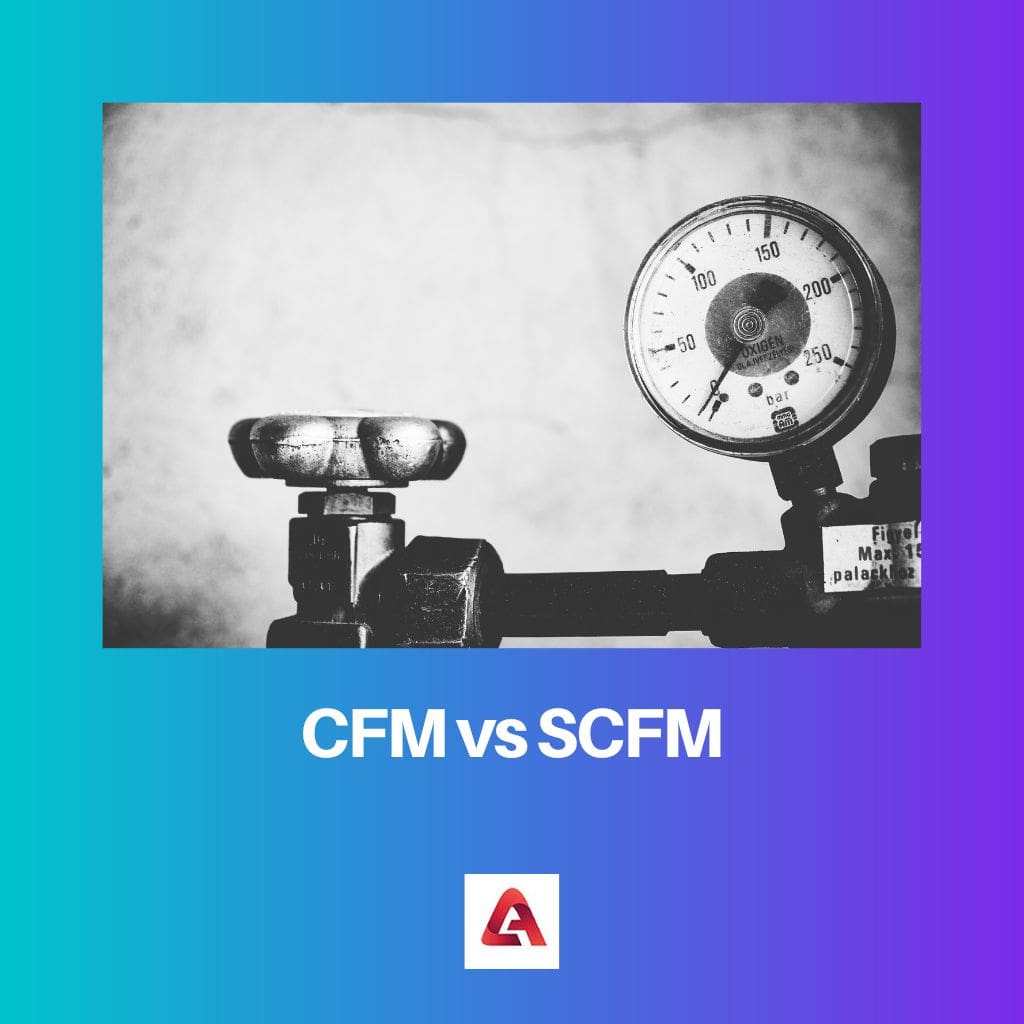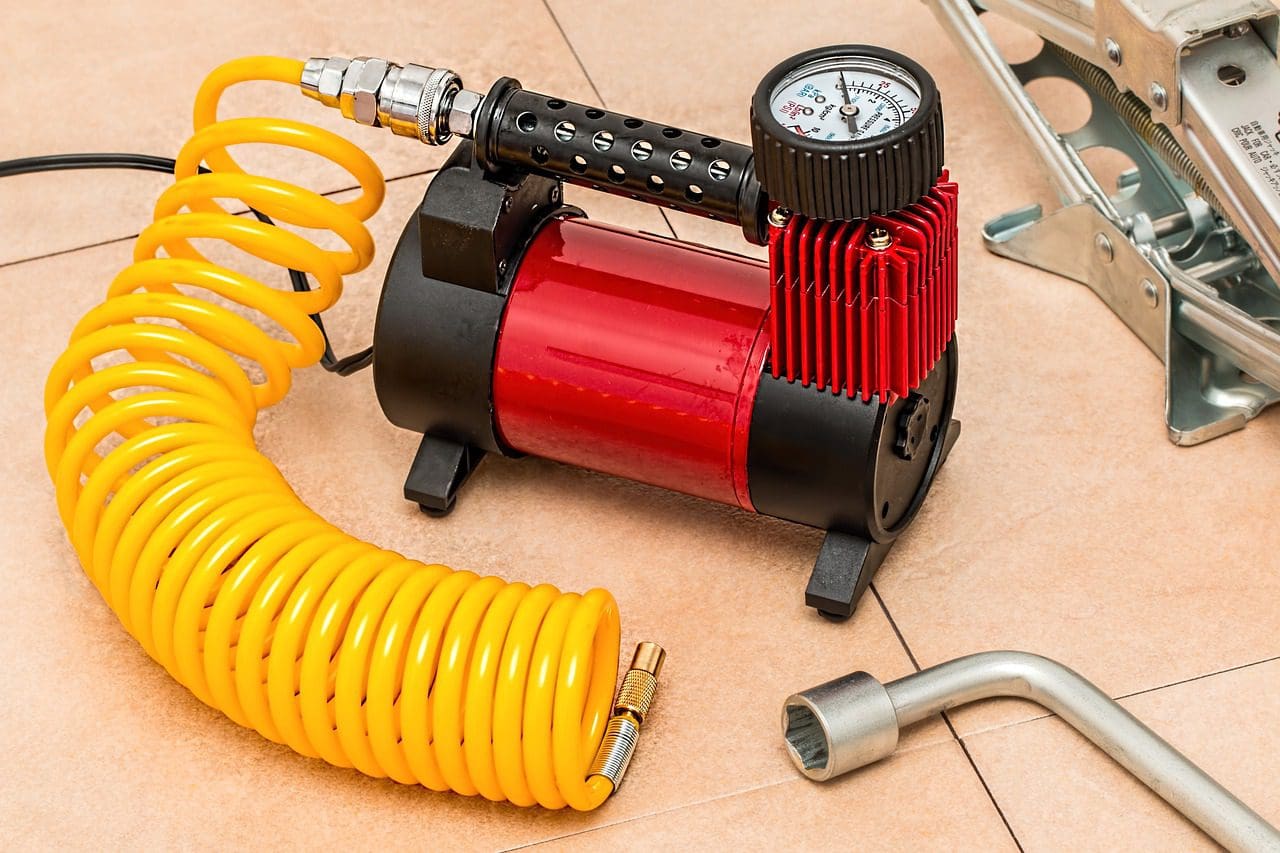There are many factors one must look out for when using measurement units. There are two types of measurement units; one the SI units, and the other is the non-SI units.
Key Takeaways
- CFM (Cubic Feet per Minute) is a unit of measurement for airflow, indicating the volume of air that flows through a system in one minute at standard conditions.
- SCFM (Standard Cubic Feet per Minute) is also a unit of measurement for airflow. Still, it considers varying temperature, pressure, and humidity levels, standardizing these factors to provide a more accurate comparison between different systems.
- The primary distinction between CFM and SCFM is that CFM measures airflow without accounting for temperature, pressure, and humidity changes. At the same time, SCFM standardizes these factors to provide a more consistent measurement across different conditions and systems.
CFM vs. SCFM
The difference between CFM and SCFM is that CFM has no standard pressure, volume, or temperature in which the volume flow of gas is to be calculated. In contrast, SCFM has a standard volume, pressure, and temperature in which the gas volume flow rate is measured.

Although the standards can vary from place to place, having a standardized and controlled environment to measure a mass’s flow rate is more efficient and easy than measuring the same rate of flow of a mass in a non-standardized situation.
Many people use these terms interchangeably, but when you want to measure the rate of flow of a gas or any other mass in an industry, it is preferable to use the standard cubic feet per minute measurement instead of the CFM.
Comparison Table
| Parameters of Comparison | CFM | SCFM |
|---|---|---|
| Full form | The full form of CFM is Cubic Feet per Minute. | The full form of SCFM is Standard Cubic Feet per Minute. |
| Standardization | There is no standard condition at which the CFM values should be calculated. | There is a standard volume, pressure, and temperature at which the SCFM values must be calculated. |
| Measurement | CFM is a smaller number than SCFM as it is calculated at higher pressure, making the air volume small. | SCFM is always a bigger number than the CFM as it is calculated at lower pressure, making the air volume larger. |
| Calculation | To calculate CFM values, the pressure is maintained under 90psi. | To calculate SCFM values, the air or gas is expanded to a standard condition of around 14.7psi. |
| Indication | CFM is more relevant to the internal capacity of an air compressor. | SCFM indicates how the gas pressurized to a standard value will perform at the end-point applications. |
What is CFM?
CFM stands for Cubic Feet per Minute. The term itself is very confusing as it does not have a single definition that applies to all situations.
CFM describes the volume of air that occurs at an exact pressure or temperature. Compared to SCFM, CFM values are always a smaller number as they are calculated at a higher pressure, decreasing the volume of gas and making it smaller.
To measure CFM, the pressure is taken to under 90psi. It is more related to the internal capacity of an air compressor. There is no standard temperature or volume at which it is calculated.

What is SCFM?
SCFM stands for Standard Cubic Feet per Minute. The molar flow rate of a gas is subjected to standardized conditions of fixed pressure and temperature.
There are many standard conditions for pressure, temperature, and even relative humidity, so care must be taken while choosing a standard condition.
As the pressure is low, the volume of gas is bigger, and thus, SCFM is always a greater number than CFM. Although the standard values can differ from place to place, it is still preferable to use the SCFM measurement unit than the CFM.

Main Differences Between CFM and SCFM
- CFM values are taken under the pressure of 90psi, whereas to calculate scfm, the air is expanded to a standard condition of around 14.7 psi.
- CFM is more relevant to the internal capacity of an air compressor. At the same time, SCFM indicates how the gas pressurized to a standard value will perform at the endpoint applications.
I echo the sentiments of the fellow readers. The article has been meticulously crafted to provide an in-depth comprehension of the topic.
The author’s explanation of the differences between CFM and SCFM is well-articulated. It has been an insightful read on a rather complex subject.
I couldn’t agree more. The comparison table is a standout feature of this article, providing a lucid differentiation between CFM and SCFM.
I appreciate the detailed comparison table that has been included. It serves as a quick and effective reference guide for understanding the variances between CFM and SCFM.
I find this post to be very helpful and informative. It has clarified a lot of doubts I had about CFM and SCFM measurement units.
The key takeaways and comparison table offer a systematic breakdown of the topic. A very informative read.
The post could delve into more practical scenarios to illustrate the applicability of CFM and SCFM in real-world situations, thereby enhancing its relatability.
The detailed explanation of CFM and SCFM serves as an excellent resource for individuals seeking to delve deeper into the realm of measurement units.
The depiction of the comparison between CFM and SCFM could be enhanced by incorporating relevant case studies, thereby adding a layer of depth to the discussion.
While the content is informative, a more engaging writing style could contribute to a more captivating reading experience for the audience.
While the article delivers a detailed comparison of CFM and SCFM, incorporating real-life case studies could offer a more holistic understanding to readers.
The use of real-world examples would have strengthened the content further by establishing a direct correlation with practical applications.
The article effectively dissects the complexities of CFM and SCFM, presenting an insightful analysis that is both thought-provoking and informative.
I beg to differ on certain aspects. The content could provide a more holistic perspective on the advantages and disadvantages of both units.
This article has definitely helped me understand the concept of CFM and SCFM better. A very well-researched piece.
The distinction between CFM and SCFM could be presented more convincingly to avoid ambiguity for readers who are new to the subject.
The explanation of the differences between CFM and SCFM is very clear and concise. I appreciate the informative nature of this article.
This article is surely helpful, but it could benefit from a more engaging and stimulating approach to maintain the reader’s interest throughout.
I think the article does a great job at simplifying complex concepts and making them accessible to a wider audience. It’s a commendable effort.
The article efficiently explains the nuances of CFM and SCFM, delivering an enriching reading experience that is both educational and engaging.
I agree, this article provides a comprehensive understanding of the topic at hand. Kudos to the writer!
The author has effectively addressed the differences between CFM and SCFM. The content is backed by logical reasoning, making it a compelling read.
This article has succeeded in elucidating the intricacies of CFM and SCFM units with a well-structured approach. A commendable piece of work.
This article offers a comprehensive understanding of CFM and SCFM, effectively catering to an audience with varying levels of knowledge on the subject.
The article provides a wealth of insights into the differences between CFM and SCFM, elucidating the topic with a nuanced approach that is highly beneficial for readers.
The author has meticulously structured the article to ensure a comprehensive understanding of CFM and SCFM measurement units. A commendable piece of work.
The article’s comprehensive overview of CFM and SCFM reflects a thorough understanding of the topic, making it an enriching piece for readers.